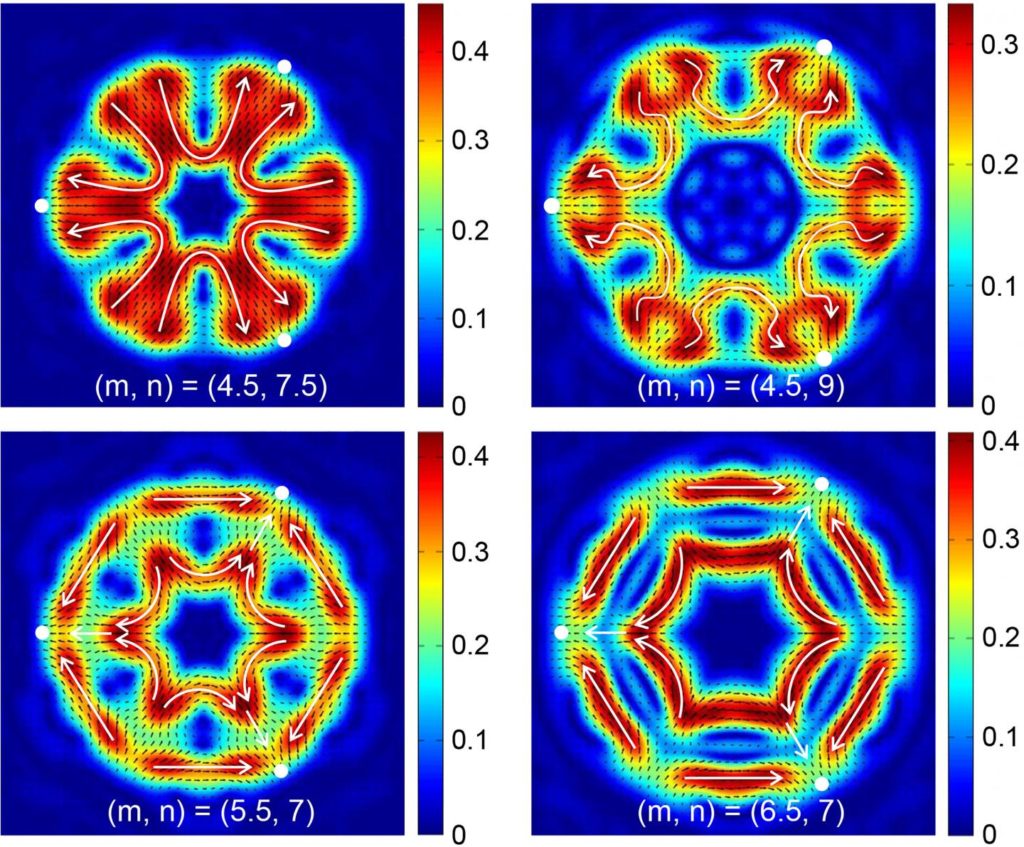WASHINGTON, D.C., September 17, 2019 — In a kaleidoscope, mirrors are placed at angles to create a visual illusion of multiple, symmetric images from one original object. The number of symmetric axes in the kaleidoscope depends on the number of mirrors and angles inside.
Drawing inspiration from this multiple-axis symmetry, researchers have discovered a new method for creating mirror-symmetric axes in the polarizations of light, which allows for complex manipulations that are useful in optical tools and technologies.
For example, optical machining, photodetectors, optical cages and microscopy are all tools that rely on vector optical fields of varying degrees of complexity. Many of them use mirror symmetry in their polarization states and focal manipulation.
In the paper, published in
APL Photonics
, from AIP Publishing, the researchers start with a cylindrical vector optical field and introduce a kaleidoscope structure to the polarization states by assigning a parameter for mirror-symmetric axes. That new parameter, which offers an additional degree of freedom, is scheduled into the transmission function on a holographic grating in a spatial light modulator to generate new vector optical fields.
“Mirror symmetry already exists in vector optical fields,” author Yue Pan said. “However, no research has systematically studied the arbitrary symmetry properties of the original vector optical fields and spin angular momentum and energy flow in the focal plane. We first propose the kaleidoscope-structured vector optical fields with arbitrary symmetry, and gain spin angular momentum and energy flow with good properties and applications.”
By implementing multiple mirror symmetry axes into the design, they were able to create tightly focused fields in various useful shapes, including a subwavelength flattop sharp line that can be used in optical storage and lithography, and various cross, gear and hexagon shapes with tentacles and spanners that are useful for optical trapping. They were also able to introduce the elliptical polarization into the design of the new vector fields, which Pan said could help to further control the design and generation of kaleidoscope-structured vector optical fields.
Author Hui-Tian Wang, leader of the group, said they plan to study a theory that can accurately predict and manipulate the symmetry properties of tightly focused optical fields, propose new kinds of vector optical fields with novel orbital angular momentum, and further study the spin-orbital angular momentum conversion and coupling.
###
The article, “Spin angular momentum density and transverse energy flow of tightly focused kaleidoscope-structured vector optical fields,” is authored by Yue Pan, Xu-Zhen Gao, Guan-Lin Zhang, Yongnan Li, Chenghou Tu and Hui-Tian Wang. The article will appear in the journal
APL Photonics
on Sept. 17, 2019 (DOI: 10.1063/1.5117269). After that date, it can be accessed at
http://aip.
scitation.
org/
doi/
full/
10.
1063/
1.
5117269
.
ABOUT THE JOURNAL
APL Photonics
is the dedicated home for open access multidisciplinary research from and for the photonics community. The journal publishes fundamental and applied results that significantly advance the knowledge in photonics across physics, chemistry, biology and materials science. See
https:/
/
aip.
scitation.
org/
journal/
app
.
This part of information is sourced from https://www.eurekalert.org/pub_releases/2019-09/aiop-kms091319.php
Larry Frum
301-209-3090
[email protected]
http://www.aip.org


